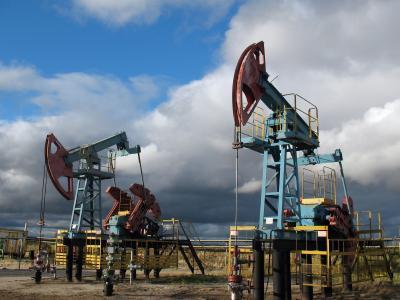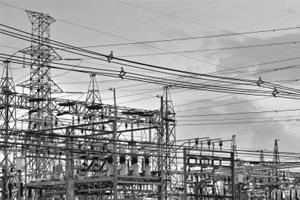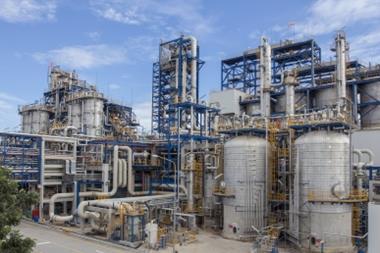Ahead of the broker’s new whitepaper, StrategicRISK reveals the biggest challenges for energy companies and how Big Data could improve their insurance policies

Energy companies could get better insurance cover by sharing more information with their insurers, according to a new whitepaper by Willis Towers Watson, due to be published early next week.
StrategicRISK was given exclusive viewing of the report, Taking cover: how an insurance shortfall leaves the energy sector exposed, which identified five challenges that risk managers in the energy sector are facing.
The five challenges include:
1. Energy companies need to adapt business models to changing conditions. The collapse in oil prices has had a big impact on the energy sector. As energy companies are reducing costs wherever they can, transferring risk needs to be done in the most efficient way possible, not least because risk management budgets are also under pressure.
2. The industry increasingly operates in a globalised environment. This global footprint requires companies to comply with an increased number of regulatory regimes. Global expansion also carries heightened supply chain risk, as supply chains become more complex and more global.
3. The need to manage human capital. The oil price collapse has led to the loss of thousands of jobs in the industry. But if a company loses its most experienced workers, it can be left short of the skills and knowledge needed to sustain current business.
4. The impact of new technology. Cyber risk constantly increases and the development of new technology within the industry brings new risks. Fracking, for example, raises the environmental legal liability risk because the process requires a continual supply of water to be injected into wells.
5. Climate change and care of the environment is important, particularly at a time when energy companies are venturing into environmentally sensitive areas such as the Arctic in search of resources.
Purchasing insurance is only a small part of managing these industry challenges, Willis Towers Watson said in the report, but it believes there are four key areas in which the insurance industry could improve its offering to energy companies. These are supply chain risk, cyber risk, Gulf of Mexico windstorm risk and drilling risk.
Supply chain risk
The Japanese earthquake in 2011 highlighted how poorly protected companies are against supply chain disruption due to a natural catastrophe. Today, companies are little more protected than five years ago and a disruption to the supply chain could conceivably cost an energy company operating in Asia around $1bn. However, it is unlikely that more than $150m of insurance capacity is available for this peril.
Cyber risk
Cyber risk levels are high for the energy industry, but for the past ten years, almost all policies issued in both the upstream and downstream energy insurance markets have contained a cyber exclusion. According to the whitepaper, this reflects underwriters’ inability to assess and quantify cyber risk given their lack of expertise in the area.
Gulf of Mexico windstorm risk
Losses caused by Hurricane Ike in 2008, particularly those suffered by upstream operators, far exceeded insurers’ estimates. This resulted in an immediate concentration of capacity and a massive increase in rates. Since then it has been difficult for energy companies operating in the Gulf of Mexico to buy protection for the hurricane season. Capacity for this type of exposure in the market is thought to be about $750m, compared to a potential overall windstorm exposure of more than $20bn.
Drilling risk
The standard method for assessing drilling risk has not changed in almost 30 years, since it was first used for drilling in the Gulf of Mexico. It therefore does not take into account the very different conditions that exist today in different drilling environments – in shale gas fields or the Arctic, for example.
To improve the insurance offering in these four areas, the report recommends energy companies to make better use of data. Big Data and powerful analytics can help insurers better understand and assess the risks each energy company faces.
However, energy firms may be reluctant to do this for fear of helping would-be cyber-attackers.
Nonetheless, Nick Dussuyer, author of the whitepaper and global head of natural resources industry at Willis Towers Watson, said both insurers and energy companies are willing to collaborate more.
“Insurance companies realise that they need to innovate to meet their clients’ needs. Some of the existing products and coverages are just not fit for purpose at the moment and need to move along with the changing world we live in,” he told StrategicRISK.
“Energy companies are going through massive changes at the moment. They have to respond to regulatory and environmental pressures, and reduced budgets as the price of oil and commodities is impacting the way they operate.”
A hot topic at the moment is climate risk, especially since COP21 in December 2015 and the publication of the World Economic Forum Global Risk Report 2016 last week, which ranked failure of climate-change mitigation and adaptation as the top risk in terms of impact.
Dussuyer said most energy companies have been well-aware of climate risk, “whether it’s in terms of the physical impact on their assets, any risks they face due to policy changes to move the world away from fossil fuels, or any liability risks they have due to their contributions to greenhouse gas emissions”.
Following the Paris climate change agreement, the energy industry can expect a more patchy regulatory impact, he added. Some countries will charge for carbon emissions, others will focus on energy efficiency or push for renewables. This may make it slightly harder for global energy companies to manage the different regulatory requirements of each country they operate in.
Insurers and financial institutions both had a large presence in Paris, showing their increased involvement with managing climate risk at a higher level, Dussuyer said.
“All energy companies are looking at this risk, but COP21 and the WEF report really highlighted that this is something that can’t be ignored. Conversations on climate change mitigation have moved on, encompassing all aspects from access to financial markets and reputational risk, as well as a societal point of view. It is also discussed as a long-term challenge, as energy companies transition to the world of renewables.”




















No comments yet